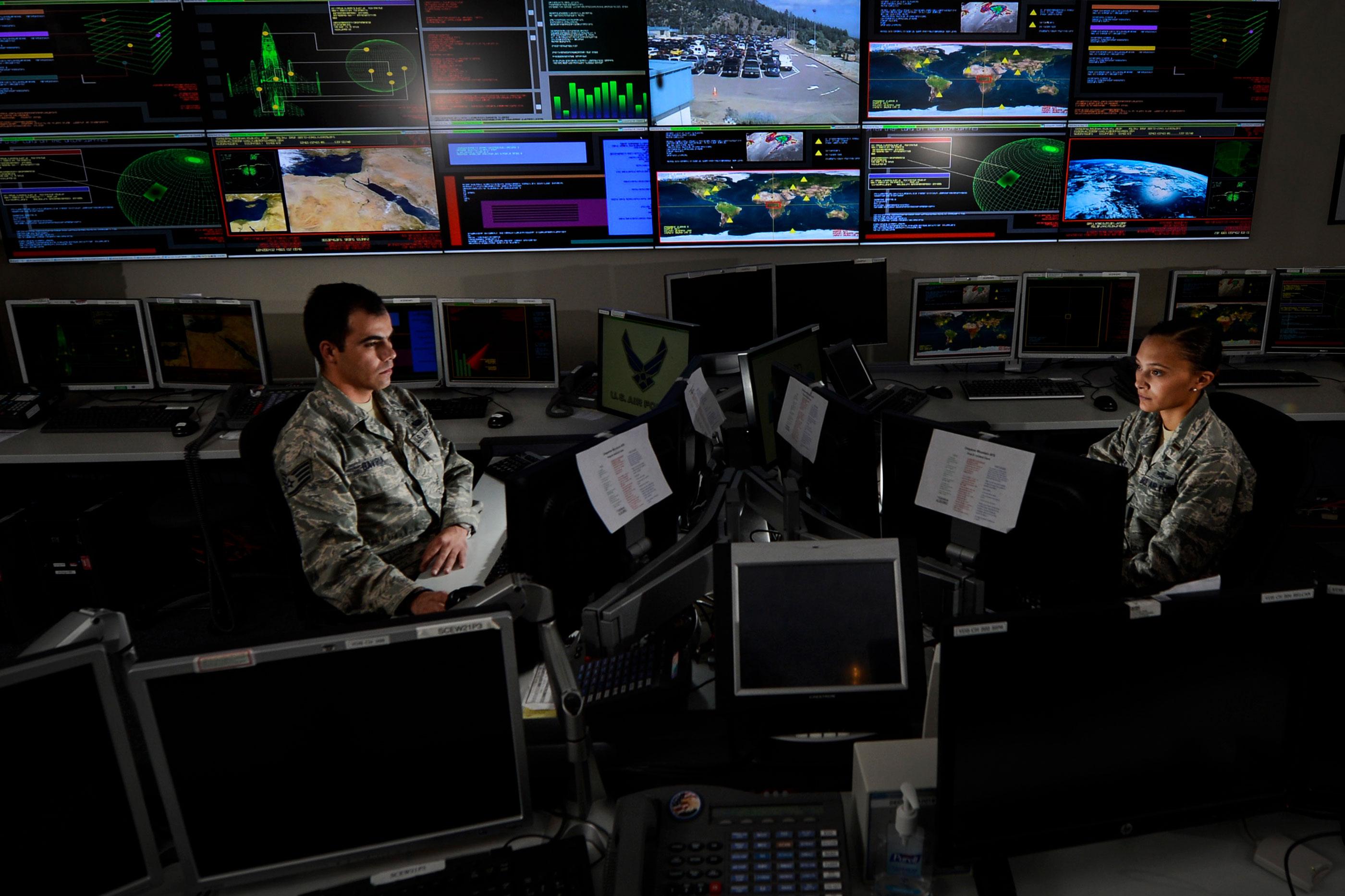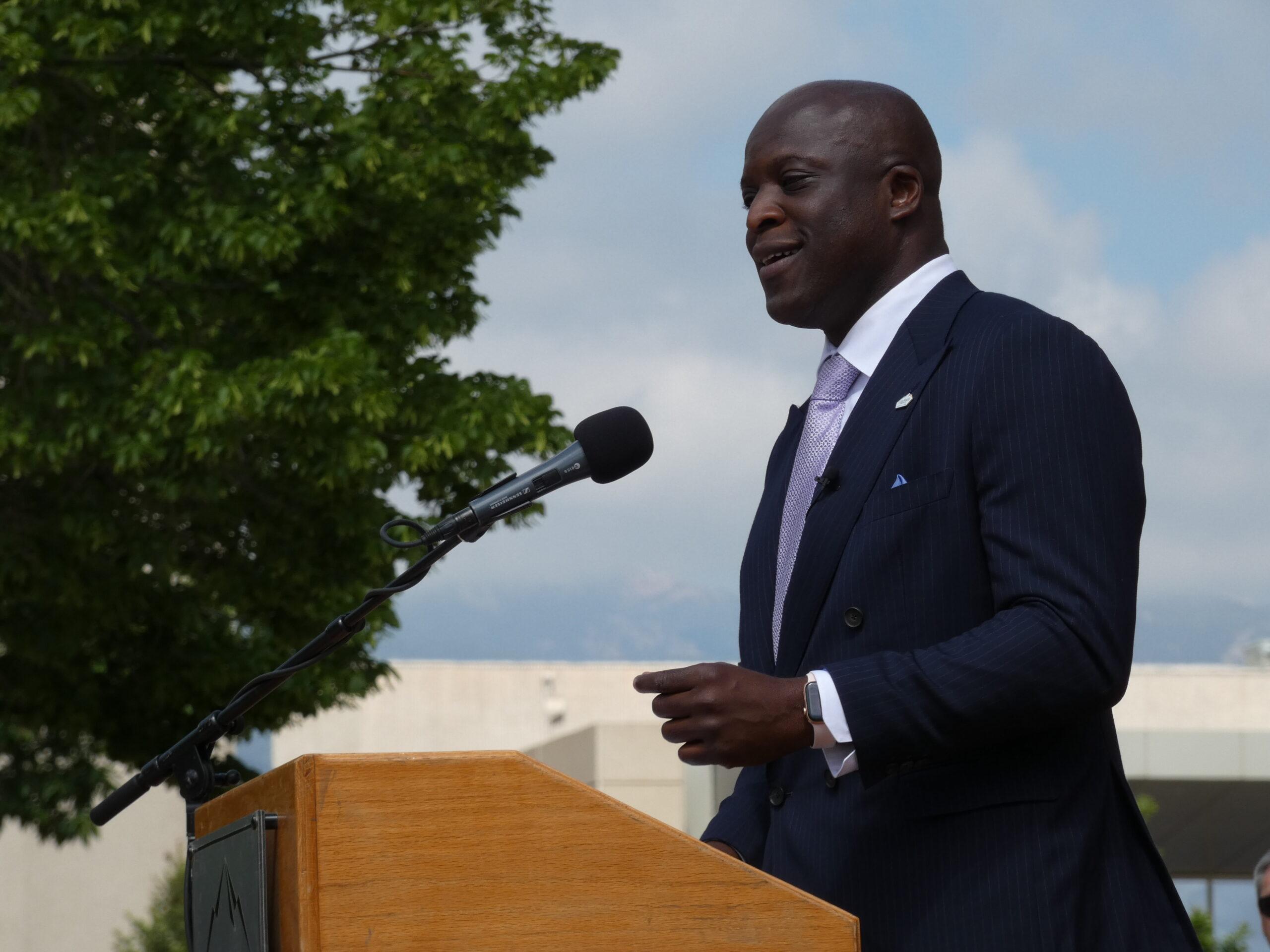

Lawmakers from Alabama, California and Colorado are jockeying to be chosen as the permanent home of the U.S. Space Command.
The Air Force released their list of candidate bases Tuesday and Colorado Springs arguably has the upper hand in the battle for home base.
The state’s second city is already the location of Air Force Space Command, the space-focused missions of Schriever and Peterson Air Force Bases, as well as the headquarters of U.S. Northern Command and the North American Aerospace Defense Command, located at Cheyenne Mountain.
Space Command, though, is not the same as the Space Force often touted by President Donald Trump. Confused? Let’s try to clear things up.
Yes, We Have Space Command Right Now
The U.S. government brought its outer space-focused resources from all military branches together under centralized leadership during the height of the Cold War. U.S. Space Command was intended to meet advancements from the Soviet Union but was later disbanded as the military shifted focus to counter-terrorism after the Sept. 11 attacks.
The Trump administration re-established U.S. Space Command with the 2018 National Defense Authorization Act and a presidential memo. Colorado Springs’ Peterson Air Force Base was designated as its temporary home with the current commander of the Air Force Space Command in charge of both. The renewed Space Command is the center of all military efforts that involve space including strategy, doctrine, training and priorities.
- Acting-Pentagon Chief In Colorado Springs: 'Space Is No Longer A Sanctuary'
An Air Force memo obtained by CNN shows Peterson and three other Colorado bases on the shortlist for the final headquarters, along with Redstone Arsenal in Alabama and Vandenberg Air Force Base in California. The leaked list matches the Air Force's official choices they just released.
As the Associated Press reported, “the host state can expect tens of millions of dollars in economic investment and bragging rights as one of the country’s leading technological hot spots.”
What The Trump Admin Means When They Say Space Force
Even though the administration ordered the establishment of Space Command, the president wants to take the new emphasis much further with the creation of a sixth branch of the military. The so-called Space Force would be housed under the Air Force in the same way the Marines exist within the Navy.
“My administration is reclaiming America’s heritage as the world’s greatest spacefaring nation,” the President said during a press conference announcing the proposal. “When it comes to defending America, it is not enough to merely have an American presence in space, we must have American dominance in space.”

When officials talk about preparing for space as a warfighting domain, they’re not talking about the sci-fi trope of astronauts shooting laser guns. The space soldiers of today are more along the lines of desk-bound computer wizards. They largely use American satellites to assist on the ground military operations and thwart the increasing attempts from adversaries to jam those satellites.
When Will The Military Leap Into The Final Frontier?
Creating a separate Space Force would take an act of Congress. The last time the United States approved an individual military branch was in 1946 with the Air Force.
Top members of the military, including acting Secretary of Defense Patrick Shanahan, have spoken to the Senate Armed Services Committee in favor of the proposal.
“Taking a next step to create a Space Force will allow us to develop and maintain a singular focus on developing the people, the capabilities, the doctrine and the culture we’ll need to develop our competitive advantage in space,” said Chairman of the Joint Chiefs of Staff, Gen. Joseph Dunford.
The chairman and others argue that space personnel who come up through different military branches with different training protocols would result in a slow and disaggregated approach. The hope is Space Force would streamline that.
Congressional skepticism has held up the plan.
Mount Holyoke College Visiting Lecturer Bryan Nakayama, who focuses on the relationship between technology and warfare, said the creation of a new military branch would actually produce more bureaucracy, costs and infighting. Nakayama said the current Space Command strikes the right balance, adding more focus to the domain without as many visible turf battles.
Also, Nakayama argues establishing a full-on Space Force could lead to an escalation in military space projects by China and Russia.
“The creation of a service department and the massive investments that would take would signal to other countries that they need to increase their involvement in space,” Nakayama said.
There’s also a matter of costs. The Brookings Institution cited an estimation that the re-establishment of Space Command would cost $800 million versus an estimated $1.5 to $2.7 billion in startup costs for Space Force.
The Air Force will choose the U.S. Space Command headquarters location in the summer of 2019.
This story was produced by the American Homefront Project, a public media collaboration that reports on American military life and veterans. Funding comes from the Corporation for Public Broadcasting.








